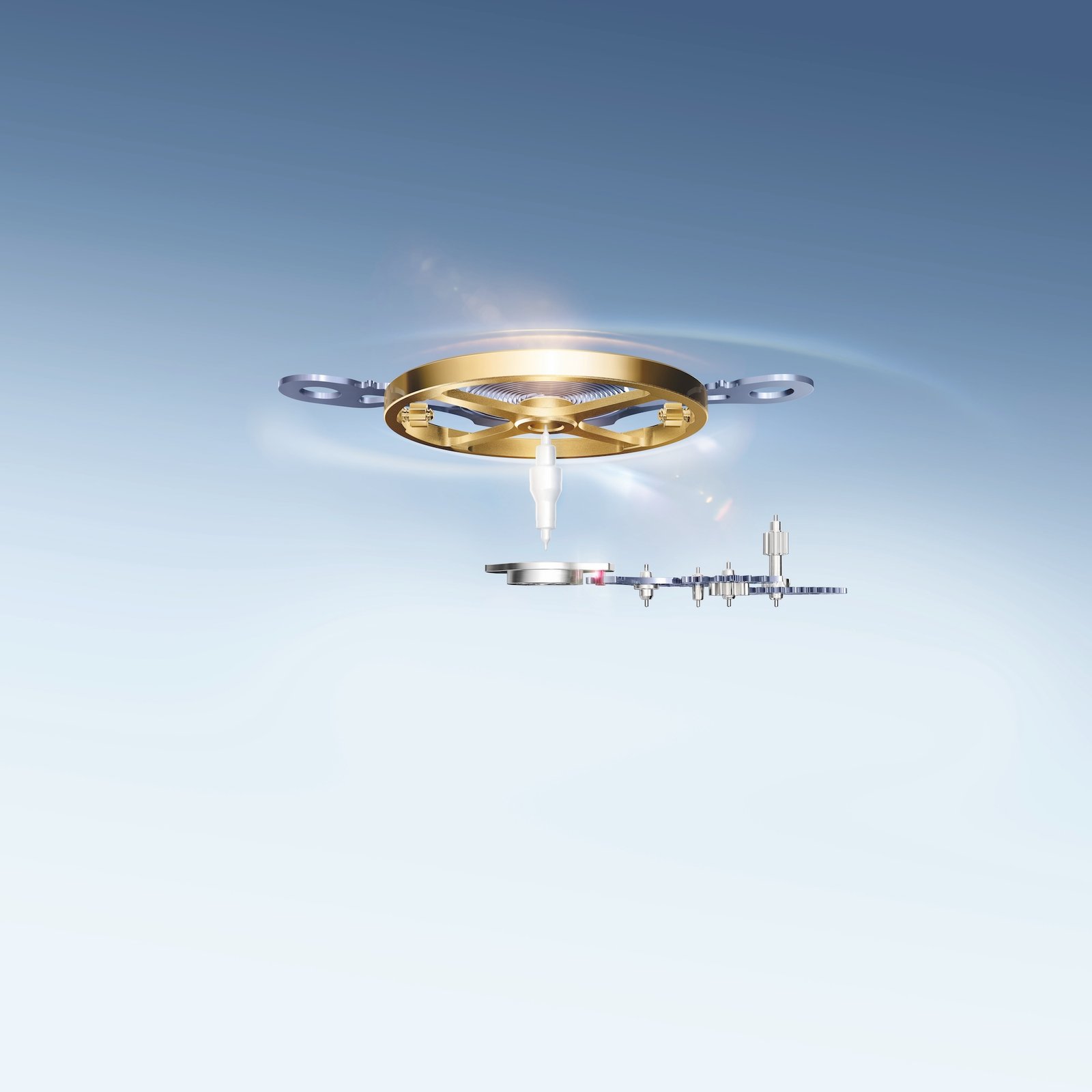One of the biggest horological announcements of 2025 was the launch of the all-new Land-Dweller.
The Land-Dweller essentially resurrects the vintage Oysterquartz (integrated bracelet watch with an angular case shape) that first came out in the 1970s — in a luxurious, modern, mechanical form.
Although based on Rolex’s recently introduced caliber 7140, automatic caliber 7135, which beats at a higher rate of 5Hz, represents a significant advancement in terms of chronometry, reliability, and energy efficiency. Requiring 7 years of research and development, Rolex utilized intellectual property from 16 patents to create caliber 7135. The new caliber 7135 unequivocally represents the most important watch movement Rolex has created in over a decade.
Five key technical innovations make Rolex caliber 7135 the company’s ultimate tour de force.
1- Dynapulse Escapement – Lubrication in Nanoliters
The Dynapulse escapement, which is the subject of 7 patents, functions differently than Rolex, and most companies’ traditional Swiss lever escapement, and because of this, oil is for lubrication rather than grease. Using a curved precision needle, the oil is dispensed on a scale of nanoliters. The process required a new assembly process to be created. According to Rolex, “The Dynapulse escapement is built and lubricated on an external support before it is inserted in the movement – a completely novel approach for the manufacture.”
2- Dynapulse Escapement – Shapes and Structure
Multiple patent applications concern the dimensions and shape of the components of the Dynapulse escapement. One of them concerns the design of the silicon distribution wheels, which have both teeth and blades on the same plane. The distribution wheels have a dual function: on one hand, they mesh with each other, and on the other, their teeth first position and then pilot the impulse rocker. Intensive research into the morphology of each component of the Dynapulse escapement was carried out to ensure the escapement would function reliably. All the silicon components are cut out, thereby reducing their inertia, and in turn the amount of energy required to engage them, even considering there are more teeth to accommodate the high frequency of 5Hz.

3- Ceramic Balance Staff
After being machined, the balance staff, which is made from white ceramic (a material known for its strength), it’s polished to a nanometric scale. The polishing prevents any fissures or damage in the event of impact, while creating a perfectly smooth surface finish. Shaping the staff by means of a femtosecond laser also allows the creation of optimal geometry for the pivots — the points at each end of the staff — thus enhancing their shock resistance.
4- Optimized Paraflex Shock Absorbers
Fitting a ceramic balance staff in the oscillator required optimization of the Paraflex shock absorber. The internal structure of the improved version is known as a “double cone’” which gives it great mobility. At the heart of this innovative construction, the hole jewel is manufactured via a new patented process that combines state-of-the-art technology and traditional know-how. The two optimized Paraflex shock absorbers – one at each end of the staff, at the pivots — include an enhanced leaf spring that ensures optimal repositioning of the staff after a shock. Thanks to the Paraflex shock absorbers, the balance staff can oscillate regularly in any position.
5- Higher Frequency of 5Hz
On the Land-Dweller, the center seconds hand moves smoothly because of the high frequency of 5 Hz – 36,000 beats per hour or 600 per minute – the seconds hand moves at a speed of 10 jumps per second. At such a rate, it can measure time to 1/10th of a second and display half-seconds, which are pad-printed on the minute track on the angled flange of the dial.
Thoughts
Groundwork for the dynapulse escapement started 10 years ago. The sequential distribution escapement offers high energy efficiency (approximately 30 per cent more than a conventional Swiss lever escapement), while taking up no more space.
Frank Vernay serves as the Head of Movement Development at Rolex, and said this to Coronet, “Much of the work concentrated on simplifying the shape of the wheels and the impulse rocker so that these components could be made out of silicon. Fitting such a complex mechanism into the same space as a conventional Swiss lever escapement constituted a real technological challenge, as did the production and pre-assembly of the small components in silicon. Then, assembling the Dynapulse escapement in the caliber entailed a complete rethink of our movement manufacturing and assembly processes.”
Increasing the frequency from 4Hz to 5Hz consumes more power, so Rolex completely redesigned the escapement (including removing the pallet jewels altogether) to offer the same power reserve as the caliber 7140, in the same amount of space.
The higher frequency results in a greater stability of the rate of the watch in all circumstances, as well as enhancing robustness and reliability.
Photos by Rolex.





